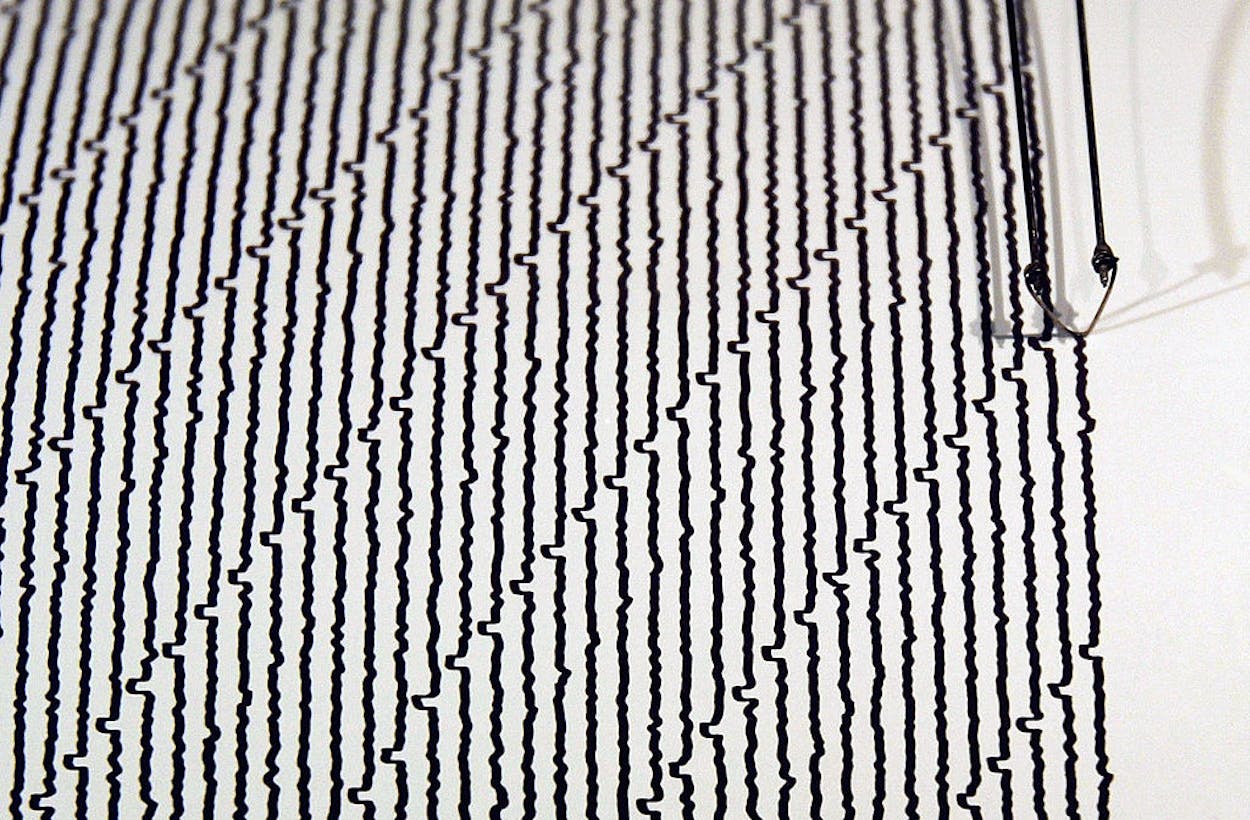Many researchers and environmentalists have been convinced for a while that oil and gas activities are responsible for the majority of Texas’s recent earthquakes, with several studies showing an apparent relationship between fracking practices and the wave of quakes rippling through the Lone Star State. Just last month, the Environmental Protection Agency said there was a strong possibility earthquakes in North Texas were the result of oilfield wastewater disposal wells. But oil and gas companies have consistently rejected these claims, as has the Texas Railroad Commission, which is tasked with regulating the industry.
New research adds significantly to the mound of evidence indicating that Texas’s quakes are man-made, and it may even finally prove that some of Texas’s earthquakes were caused by a fracking byproduct. According to a newly published article in Science Journal, scientists from several leading universities found that wastewater from fracking that was pumped into the earth in East Texas forced the ground to bulge and caused enough pressure to trigger quakes. “We have a definitive link between the injection of the wastewater and the earthquakes,” lead author Manoochehr Shirzaei, a geophysicist at Arizona State University, said in a video posted by ASU.
The research team focused on the 2012 earthquake that shook Timpson, a town of less than 1,200 people, tucked between Carthage and Nacogdoches in East Texas. Most of Texas’s earthquakes are fairly benign in terms of how much damage they cause, but the Timpson quake was particularly rough, reportedly breaking windows, dishes, and injuring at least one person. The quake registered a magnitude of 4.8 on the Richter scale, which remains the largest earthquake ever recorded in East Texas. Several smaller quakes rippled through the area shortly before and after the big one.
Using three years worth of radar data captured by a Japanese satellite, the researchers looked at several wells near Timpson where wastewater from fracking was injected into the ground. “You can think of the wastewater as ancient ocean water,” co-author William Ellsworth, a geophysics professor at Stanford’s School of Earth, Energy & Environmental Sciences, said in a Stanford press release. “It’s too salty and too contaminated with other chemicals to treat economically, so the only viable solution at present is to put it back underground.” This can lubricate and place pressure on deep fault lines, and it can also raise the ground. The scientists were able to observe the land above some of these East Texas wells significantly deform over time, rising three millimeters per year.
This was apparently a major breakthrough in earthquake research. “We know that when you inject fluid into the ground it causes surface deformation, but we’d never seen it,” Shirzaei told Scientific American. “For this Timpson study area we got lucky and could see the deformation.”
Perhaps the biggest takeaway from this study isn’t that wastewater disposal from fracking causes earthquakes—after all, that’s been suggested by countless studies before this one—but rather that this team of scientists seems to have also found a way to help minimize the earthquake risk associated with wastewater injections. Shirzaei said that the team’s research shows that oil and gas producers can customize the rate of injections in a way that would reduce the size of the resulting earthquakes. “We hope that the industry will take this as an important and positive step forward to make injections and fracking safer,” Shirzaei said in the Arizona State video. “We want to open a dialogue with companies to see how we can work together to help them mitigate these hazards.”
In an emailed statement, a spokesperson for the Texas Railroad Commission said that their “technical staff will review the study,” and reiterated that the agency “takes the issue of induced seismicity very seriously and has in place some of the most stringent rules on disposal wells.”






